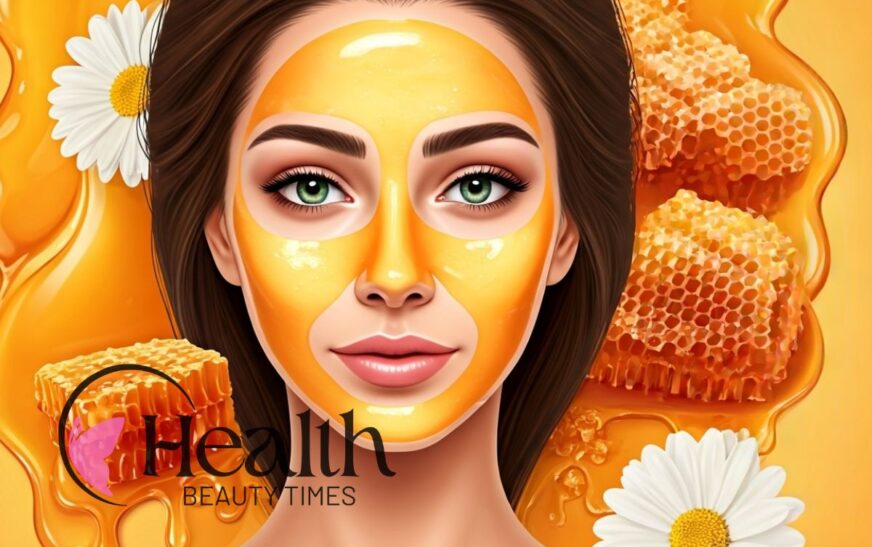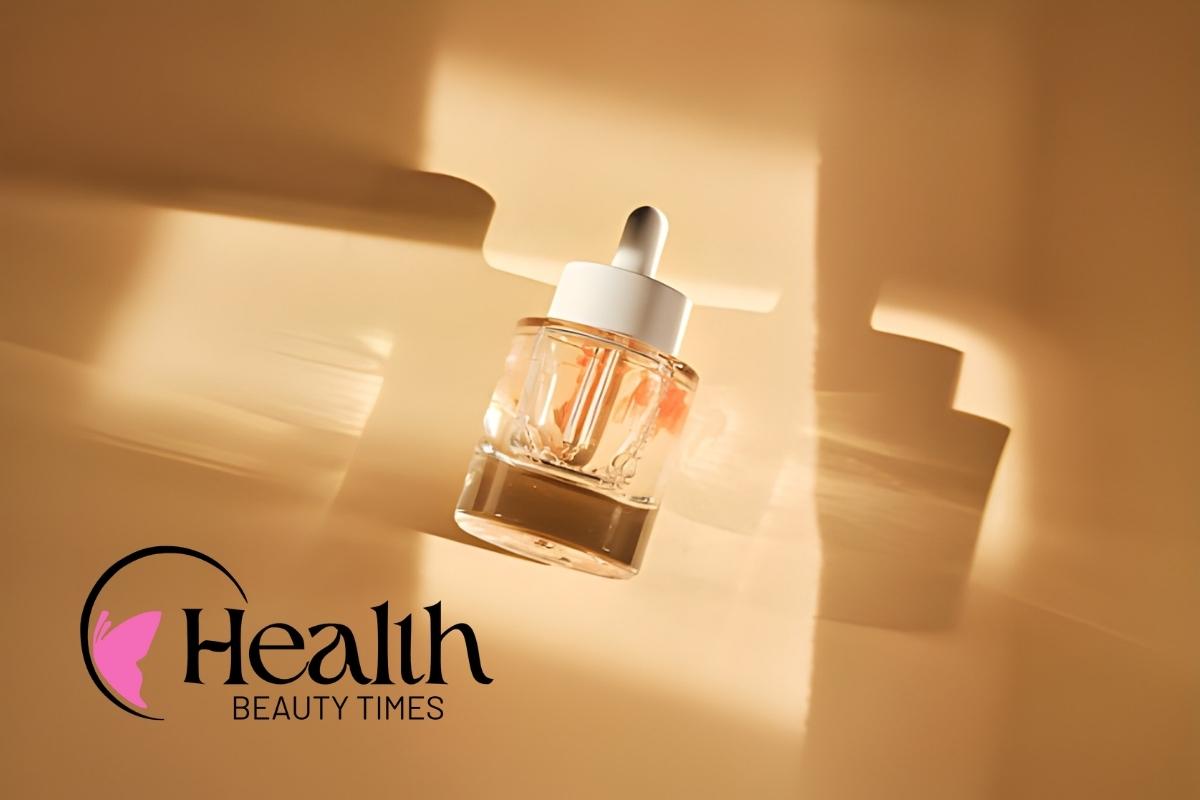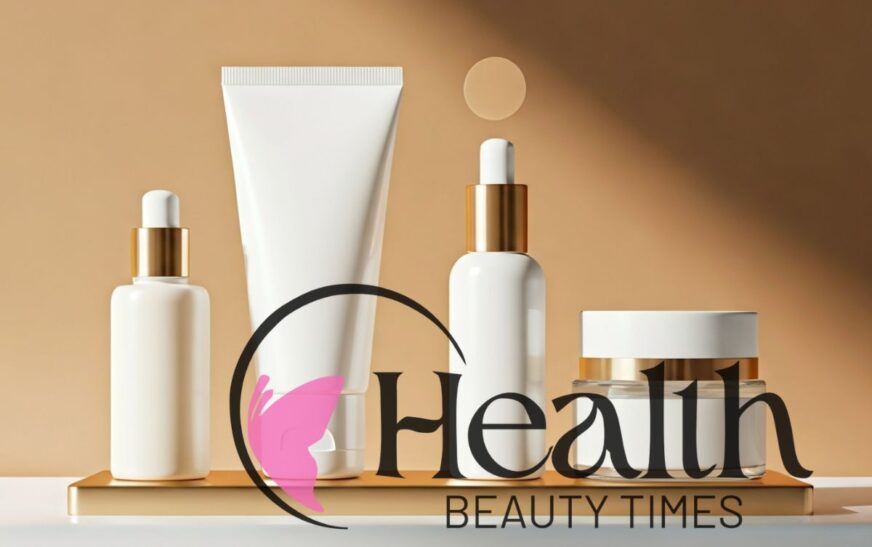Key Highlights
- Honey face masks deliver hydration, balance oil, and brighten all skin types, from dry to sensitive to oily.
- As a natural humectant, honey draws moisture into the skin, while its powerful antimicrobial activity helps fight acne and soothe inflammation.
- Regular use reduces the look of acne scars and adds a noticeable natural glow to your complexion.
- DIY mask recipes often combine honey with ingredients like lemon, yogurt, or turmeric for boosted results.
- People with sensitive or acne-prone skin should always patch test first and be aware of possible allergies.
- Manuka honey and raw, unpasteurized honey offer especially strong skin benefits due to their unique enzyme and antioxidant profiles.
Introduction
If you’re searching for a gentle, powerful addition to your natural skincare routine, honey face masks may be your answer. This golden, nutrient-rich ingredient has been used for centuries to hydrate, soothe, and brighten the skin. By harnessing honey’s unique skin benefits as a face mask, you can address concerns ranging from dryness and dullness to redness, acne, and early signs of aging. Discover how honey face masks can enhance your skin’s health and radiance, naturally and effectively.
Why Honey Face Masks Are Popular in Natural Skincare
Throughout the beauty industry, honey’s reputation as a skin-loving, natural ingredient continues to grow. Its proven benefits—hydration, antimicrobial protection, and calming effects—make it a staple in many skincare routines. People turn to honey because it delivers real results for a range of skin concerns.
When used as a face mask, honey helps with common skin struggles like acne, redness, and inflammation. The humectant and antioxidant properties in honey offer gentle, effective care for nearly every skin type, building on ancient wisdom and modern science.
Ancient Uses and Modern Trends
For thousands of years, honey has been treasured in skin care rituals across the globe. Ancient Egyptian women famously used honey to smooth and rejuvenate their skin, appreciating its natural healing abilities. This tradition lives on today, with the beauty industry increasingly favoring honey in popular products for its multifaceted benefits.
Modern trends highlight not only honey’s history but also its scientific credentials. Dermatological studies back up honey’s effectiveness, citing its antibacterial, anti-inflammatory, and antioxidant qualities. According to research published in peer-reviewed journals, honey can kill various bacteria, making it a valuable asset for acne-prone skin. Dermatologists also recognize honey’s ability to soothe irritation and support the skin’s barrier function. As “Dr. Cynthia Cobb, DNP, APRN” notes, “Honey is typically safer to use on your skin than lemon. It’s gentler, more nourishing, and less likely to cause a reaction.” With both tradition and science on its side, honey’s popularity in modern skin care shows no sign of slowing.
What Makes Honey Unique for Facial Care
Honey stands out as a facial care ingredient thanks to its status as a natural humectant—it draws moisture from the air into your skin, providing deep, lasting hydration. This moisture boost is key for soft, plump skin, especially in dry or changing climates.
Beyond hydration, honey’s enzyme activity and antimicrobial power set it apart. Raw honey contains hydrogen peroxide and amino acids, which gently cleanse and protect your skin from bacteria and environmental stressors. These natural enzymes also help honey act as a mild exfoliant, lifting away dead skin cells without irritation.
You’ll notice visible improvements after regular use: skin feels smoother, looks brighter, and shows fewer signs of irritation. Honey’s ability to exfoliate gently means your complexion can regain its natural glow and clarity—making honey a truly unique addition to your face care routine.
Key Benefits of Honey Face Masks for Different Skin Types
Honey face masks bring a range of skin benefits for every type of skin. For dry or sensitive skin, honey hydrates and soothes, while those with oily skin enjoy balanced oil production and fewer breakouts. Even combination and normal skin types benefit from honey’s ability to gently exfoliate and clear away dead cells.
No matter your skin concerns—be it rough patches, excess oil, or irritation—honey is a versatile option. Its all-natural ingredients provide tailored results for your unique skin needs.
Hydration and Soothing Effects for Dry and Sensitive Skin
Dry or sensitive skin can feel tight, uncomfortable, and prone to redness. Honey offers immediate relief by acting as a natural humectant, drawing moisture deep into your skin and locking it in. This makes it an excellent soothing face mask treatment that calms irritation and repairs the skin barrier.
- The sugars and amino acids in honey help replenish moisture, giving dry skin a plump, supple feel.
- Sensitive skin types benefit from honey’s gentle, non-irritating properties that nurture and protect.
- Honey’s anti-inflammatory power helps reduce redness and discomfort, making it safe for most sensitive skin conditions.
For those with reactive or allergy-prone skin, honey may provide gentle hydration without triggering flare-ups. Always patch test first, but for many, honey is a natural solution to dryness and irritation.
Balancing Oil Production for Oily Skin
Oily skin can be challenging, with excess oil often leading to clogged pores and breakouts. Honey’s natural enzymes and antibacterial properties make it ideal for balancing oil production while keeping your skin clear. By drawing in moisture without clogging pores, honey helps your skin find its natural balance.
- Honey’s gentle exfoliation removes excess oil and dead skin, preventing sebum buildup and blackheads.
- Its antimicrobial activity targets acne-causing bacteria, reducing breakouts and inflammation.
- Regular use can result in smoother, less shiny skin that feels healthy and refreshed.
Using a honey face mask 2-3 times a week can help oily skin stay hydrated and clean, without the harshness of chemical treatments. Pairing honey with other natural ingredients like yogurt or lemon may further help maintain oil control and clarity.
Gentle Care for Combination and Normal Skin
Combination and normal skin types benefit from honey’s balanced, gentle approach. Honey is a natural exfoliator, helping remove dead skin cells and revealing the fresh, even-toned skin beneath. Because it’s non-comedogenic, honey won’t clog pores, making it suitable across the T-zone and drier areas alike.
- The antioxidants in honey support overall skin health, while mild exfoliation keeps your complexion clear.
- Gentle enough for regular use, honey smooths rough patches and adds a healthy glow.
- Its soothing properties help maintain the skin’s natural equilibrium and resilience.
For those with combination skin, honey adapts to both oily and dry zones, providing moisture where needed and supporting your skin’s natural renewal process. Even normal skin can benefit from the radiance and softness honey delivers.
How Honey Addresses Common Skin Concerns
Struggling with acne, redness, or lingering inflammation? Honey face masks can be a simple, natural solution. The skin benefits of honey come from its antimicrobial and anti-inflammatory properties, which target common skin concerns effectively.
Applying honey as a regular face mask reduces acne breakouts, soothes irritation, and helps fade scars over time. Whether you’re dealing with flare-ups or chronic conditions, honey’s healing qualities offer relief and visible improvement for a healthier, clearer complexion.
Acne, Redness, and Inflammation Relief
Honey helps tackle acne, redness, and inflammation through a combination of natural mechanisms. Its antimicrobial activity, including the production of hydrogen peroxide, directly fights acne-causing bacteria. This makes honey especially effective for breakouts and irritation.
- The anti-inflammatory properties calm swelling, redness, and discomfort from acne or atopic dermatitis.
- Honey can soothe inflamed skin, providing relief for those with sensitive or reactive complexions.
- Its gentle cleansing action removes impurities and excess oil without stripping or irritating your skin.
Regular use of a honey face mask can minimize the appearance of blemishes and even help manage chronic skin conditions like eczema or psoriasis. It’s a safe, natural way to support skin health while avoiding harsh chemicals.
Lightening Dark Spots and Scarring
If you struggle with acne scars or dark spots, honey’s mild lightening properties may offer subtle improvement. Honey contains natural enzymes and antioxidants that encourage new skin cells to form, while helping to break down pigment in stubborn marks.
The addition of vitamin C from ingredient pairings like lemon or turmeric can enhance these effects, promoting a more even skin tone over time. This gentle exfoliation and regeneration process means scars and spots gradually fade, revealing brighter, clearer skin.
With continued use, you may notice a smoother, more radiant complexion. While results vary, honey’s ability to lightly resurface the skin—especially when combined with other mild brighteners—makes it a valuable addition to your routine if you want to address discoloration or lingering scars.
Anti-Aging and Brightening Properties
Honey’s reputation for anti-aging comes from its high concentration of natural antioxidants. These compounds neutralize free radicals, which are known to cause skin damage and accelerate the visible signs of aging. The amino acids in honey support elasticity, helping your skin maintain a firmer, more youthful look.
Consistent honey mask use provides a natural glow and improves overall brightness. The gentle exfoliating enzymes in honey sweep away dead skin cells, allowing fresh, healthy cells to shine through.
Visible improvements after regular use include less noticeable fine lines, a more even skin tone, and a revitalized complexion. As “SaVanna Shoemaker, MS, RDN, LD” explains: “Honey works magic on your skin—hydrating, nourishing, and naturally brightening it to reveal a radiant, youthful glow.” Make honey a core part of your anti-aging strategy for noticeable long-term results.
Beginner’s Guide: How to Make and Use a Honey Face Mask at Home
You don’t need fancy products or a trip to the spa to benefit from a honey face mask. With just a few items from your local grocery store—such as raw or unpasteurized honey—you can create a nourishing DIY treatment at home.
The best method is simple: apply a thin layer of honey to clean, damp skin, leave it on for 15-30 minutes, and rinse off with warm water. Read on for step-by-step instructions, ingredient tips, and safety advice to maximize your results.
What You’ll Need to Get Started (Types of Honey, Tools, and Optional Add-ins)
Selecting the right type of honey is crucial for maximum skin benefits. Raw honey, especially Manuka honey from New Zealand, boasts superior antimicrobial properties, making it ideal for treating acne scars and various skin conditions. Essential tools include a mixing bowl, spoon, and a clean applicator brush. Optional add-ins like coconut oil or jojoba oil can enhance hydration for dry skin, while vitamin C and essential oils provide additional nourishment. Always conduct a patch test on a small area to ensure compatibility with your skin type.
Step-by-Step Guide
Applying a honey face mask correctly ensures you get the best skin results. Here’s a simple guide:
- Choose the right honey for your skin type.
- Prepare your face by cleansing with warm water.
- Apply the mask in a gentle, circular motion.
- Leave on for 15-30 minutes, then rinse.
| Step | What to Do | Why It Matters |
|---|---|---|
| Choose honey | Pick raw or Manuka honey based on your skin’s needs | Maximizes hydration, antimicrobial, and antioxidant benefits |
| Prepare your face | Wash with warm water and pat dry | Ensures skin is clean and pores are open for absorption |
| Apply the mask | Spread a thin, even layer in circular motions | Promotes even coverage and gentle exfoliation |
| Wait and remove | Leave for 15-30 min; rinse with warm water | Allows active compounds to work, then cleans skin without residue |
Follow these steps for a safe, effective experience every time.
Step 1: Choose the Right Honey for Your Skin
Different types of honey offer unique skin benefits. Manuka honey, sourced from New Zealand, is prized for its strong antimicrobial and healing properties, making it ideal for acne-prone or inflamed skin. Raw, unpasteurized honey retains the highest levels of enzymes and nutrients, delivering all-around skin nourishment.
If your goal is deep hydration and a radiant glow, opt for raw wildflower honey. For those targeting breakouts or chronic skin conditions, Manuka honey may deliver faster, more noticeable results.
Compare labels when shopping at your local store, and select honey that’s unprocessed and free of additives. Regular raw honey is excellent for most skin types, while Manuka honey is a specialty option for heightened antibacterial action. Both can be used on their own or as the base for multi-ingredient masks.
Step 2: Prepare Your Face and Ingredients
Proper preparation sets the stage for an effective honey face mask. Start by cleansing your face thoroughly with warm water to remove makeup, oil, and impurities. Gently pat your skin dry so it remains slightly damp—this helps honey spread easily and boosts absorption.
Gather all ingredients and tools before you begin. Pour your chosen honey into a clean bowl, and add any optional mix-ins, like yogurt or coconut oil, for enhanced results. Stir to blend evenly.
Before full application, perform a patch test on a small area of skin, especially if you have sensitive or allergy-prone skin. Wait 24 hours to check for any signs of irritation or redness. If your skin shows no reaction, proceed confidently with your honey mask routine.
Step 3: Apply the Mask Properly
When it’s time to apply your honey face mask, use clean fingertips or a brush to spread a thin, even layer over your face. Work in a gentle circular motion, ensuring all areas are covered but avoiding the eyes and lips.
If using additional ingredients, mix them thoroughly with the honey before applying. Adjust amounts and ingredient choices based on your skin type—thicker masks for dry skin, lighter for oily or combination skin.
Let the mask sit for the recommended time, usually 15-30 minutes. This allows honey’s active compounds to hydrate, exfoliate, and soothe your skin. Relax during this time, and avoid touching your face until you’re ready to rinse.
Step 4: How Long to Leave It On and Removal Tips
For optimal results, leave your honey face mask on for 15 to 30 minutes. This gives honey’s enzymes and humectants time to work their magic, hydrating skin and supporting gentle exfoliation.
To remove, use warm water and your fingertips or a soft cloth, gently massaging in small circles to ensure all honey is rinsed away. Avoid harsh scrubbing, which can irritate the skin, especially if you’ve added exfoliating ingredients like yogurt or turmeric.
After removal, pat your face dry and apply a light moisturizer if needed. Your skin should feel noticeably softer, smoother, and more radiant. For most people, 2-3 times per week is enough—overuse may cause irritation, so adjust based on how your skin responds.
Boosting Honey Mask Benefits with Other Natural Ingredients
Combining honey with other natural ingredients can amplify its skincare effects. Adding lemon, yogurt, coconut oil, or turmeric to your honey face mask targets specific concerns like brightening, hydration, or oil control. These ingredient pairings deliver extra vitamin C, antibacterial action, and exfoliation.
Always match add-ins to your skin’s needs and do a patch test for safety. Learn how to blend these powerful combinations for maximum skin benefits in your next DIY session.
Combining Honey with Lemon, Yogurt, or Turmeric
Pairing honey with complementary ingredients creates targeted face masks for various skin issues:
- Lemon: Rich in vitamin C, lemon can help lighten dark spots and brighten skin, but should only be used in small amounts and with caution for sensitive types.
- Yogurt: Adds gentle exfoliation and lactic acid, smoothing rough texture and enhancing hydration.
- Turmeric: Offers powerful anti-inflammatory and antioxidant properties, boosting honey’s ability to calm redness and fade scars.
Mixing these natural ingredients with honey lets you customize treatments for your skin’s unique needs. For example, a honey-lemon mask can help with excess oil and discoloration, while a honey-yogurt blend works well for dryness and gentle exfoliation. Always start with a patch test, and avoid lemon if you plan to be in the sun soon after use.
DIY Honey Face Mask Recipes for Brightening, Hydration, and Anti-Aging
Homemade honey face masks are easy and effective for specific skin concerns:
- Brightening Mask: Combine 1 tablespoon honey, 1 teaspoon lemon juice, and a pinch of turmeric. Leave on for 10-15 minutes.
- Hydration Mask: Mix 1 tablespoon honey with 1 tablespoon plain yogurt and a few drops of coconut oil for deep moisture.
- Anti-Aging Mask: Blend 1 tablespoon Manuka honey with 1 teaspoon aloe vera gel and a few drops of jojoba oil for antioxidant support.
These recipes leverage honey’s natural enzymes and the added benefits of vitamin C, lactic acid, and plant-based oils. Always apply to clean skin, leave for 10-20 minutes, and rinse gently. Repeat 2-3 times a week for best results, adjusting ingredients based on how your skin responds.
Risks, Side Effects, and Precautions for Sensitive and Acne-Prone Skin
While honey face masks are generally safe, there are some risks for sensitive or acne-prone skin. Allergic reactions can occur, especially if you’re sensitive to pollen or bee products. Always perform a patch test before full application.
Overuse or leaving honey on for too long may cause irritation or worsen breakouts. Stick to recommended usage and consult a dermatologist if you have chronic skin conditions. With the right precautions, most people can enjoy honey’s soothing, nourishing effects.
Possible Allergies and How to Patch Test
Honey allergies are rare but possible, especially if you react to bee pollen, propolis, or certain flowers. Symptoms can include redness, swelling, itching, or a rash—always err on the side of caution.
- Conduct a patch test by applying a small amount of honey to a hidden skin area, like the inside of your wrist.
- Wait 24 hours and monitor for any signs of irritation or allergic reaction.
- If no reaction occurs, it’s likely safe to proceed with a facial application.
Sensitive skin types should be extra vigilant, as reactions can be more severe. If you experience discomfort, wash off the honey immediately and avoid further use. When in doubt, consult your healthcare provider or dermatologist for personalized advice.
Frequency of Use: How Often Is Safe?
How often should you use a honey face mask? For most people, 2-3 times per week is safe and effective. This allows your skin to enjoy honey’s benefits—hydration, exfoliation, and calming—without risking irritation or imbalance.
If you have chronic skin conditions, start slowly (once a week) and observe your skin’s response. Overuse, especially on sensitive or damaged skin, can lead to redness or discomfort. Honey is gentle, but even natural ingredients can cause problems in excess.
Listen to your skin and adjust your routine as needed. If your face feels dry, tight, or irritated, reduce the frequency. For best results, incorporate honey masks as part of a balanced skincare routine alongside gentle cleansing and daily sun protection.
Conclusion
Integrating honey face masks into a skincare routine offers numerous advantages, from promoting skin health to addressing various skin conditions. With natural humectant properties, honey attracts moisture, creating a soothing treatment ideal for different skin types. Unpasteurized honey, particularly Manuka honey, boasts exceptional antimicrobial activity and natural antioxidants that combat free radicals, while also aiding in reducing acne scars. The simple addition of ingredients like coconut oil or essential oils can further enhance the benefits, making it a versatile choice for achieving a natural glow.
Frequently Asked Questions
Is Manuka Honey Better Than Regular Honey for Face Masks?
Manuka honey offers unique antibacterial and anti-inflammatory properties that may enhance its effectiveness in face masks compared to regular honey. Its higher methylglyoxal content can help soothe irritated skin and promote healing, making it a preferred choice for targeted skincare treatments.
Are There Any Scientific Studies Supporting Honey Face Masks?
Numerous scientific studies highlight honey’s antibacterial, anti-inflammatory, and moisturizing properties, making it beneficial for skin health. Research shows that honey masks can enhance skin hydration and reduce acne, supporting their efficacy in natural skincare regimens. Explore these studies to understand better the benefits of honey face masks.
Can I Use a Honey Face Mask Every Day?
Using a honey face mask daily can benefit your skin, but moderation is key. Overuse may lead to irritation. It’s advisable to start with a few times a week and observe how your skin reacts before increasing frequency. Always consider your skin’s unique needs.
What Visible Improvements Should I Expect After Regular Use?
Regular use of honey face masks can result in a more radiant complexion, reduced acne scars, and improved skin hydration. You may also notice enhanced elasticity and a smoother texture, leading to an overall healthier appearance. Consistency is key for best results.
Dont miss these: Beginner’s Guide to Skincare Routine Order Explained






